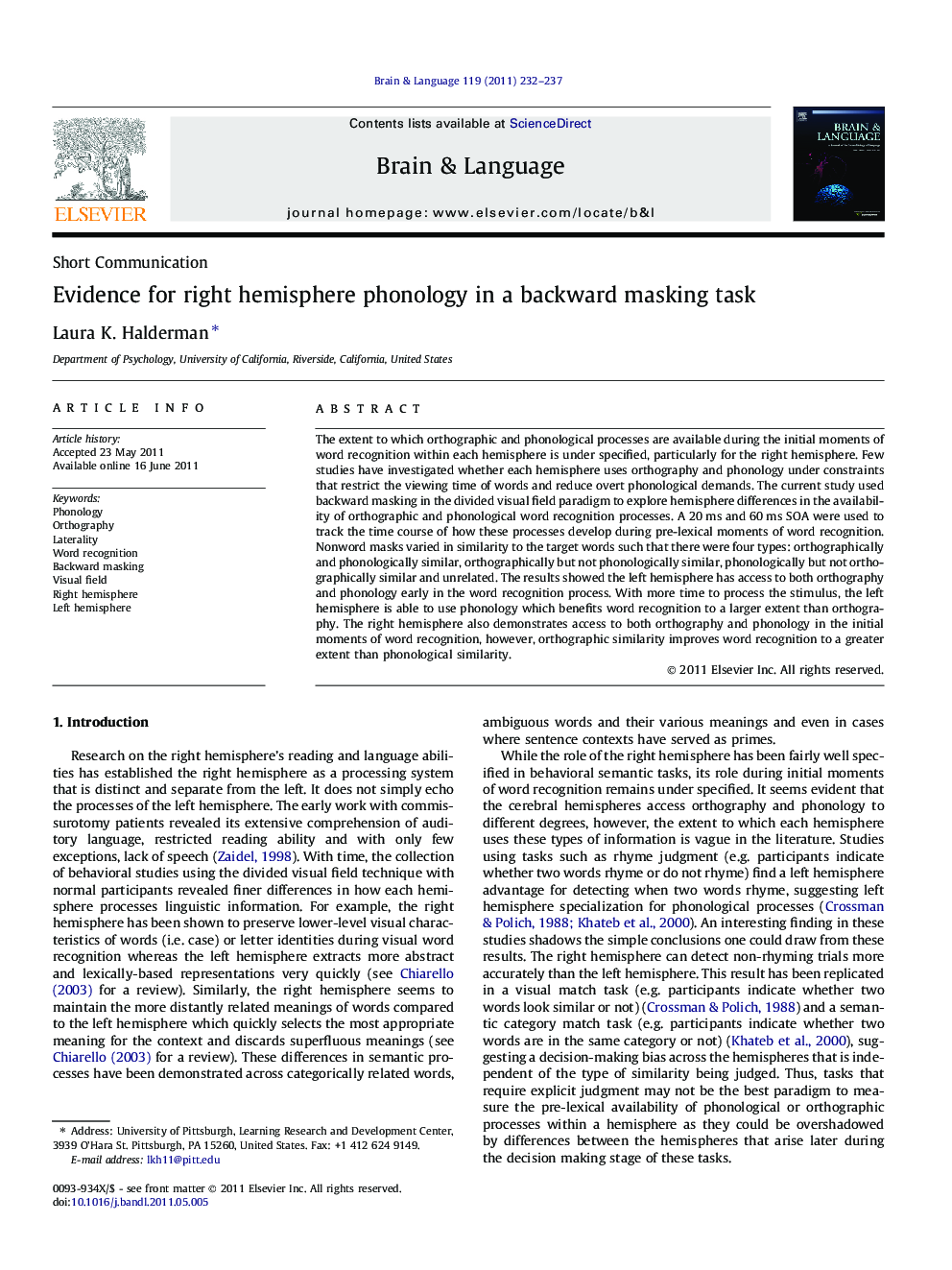| Article ID | Journal | Published Year | Pages | File Type |
|---|---|---|---|---|
| 925491 | Brain and Language | 2011 | 6 Pages |
The extent to which orthographic and phonological processes are available during the initial moments of word recognition within each hemisphere is under specified, particularly for the right hemisphere. Few studies have investigated whether each hemisphere uses orthography and phonology under constraints that restrict the viewing time of words and reduce overt phonological demands. The current study used backward masking in the divided visual field paradigm to explore hemisphere differences in the availability of orthographic and phonological word recognition processes. A 20 ms and 60 ms SOA were used to track the time course of how these processes develop during pre-lexical moments of word recognition. Nonword masks varied in similarity to the target words such that there were four types: orthographically and phonologically similar, orthographically but not phonologically similar, phonologically but not orthographically similar and unrelated. The results showed the left hemisphere has access to both orthography and phonology early in the word recognition process. With more time to process the stimulus, the left hemisphere is able to use phonology which benefits word recognition to a larger extent than orthography. The right hemisphere also demonstrates access to both orthography and phonology in the initial moments of word recognition, however, orthographic similarity improves word recognition to a greater extent than phonological similarity.
► Hemisphere differences were examined using lateralized backward masking. ► Masks varied in orthographic and phonological similarity to the target. ► The left hemisphere showed very early access to both orthography and phonology. ► Recognition in the right hemisphere was benefited more by orthographic similarity. ► However, at the shortest SOA, the right hemisphere did have access to phonology.
